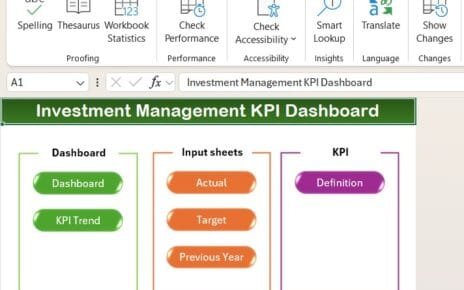Broadcasting companies often face the challenge of tracking and analyzing various Key Performance Indicators (KPIs) effectively. Using an Excel-based Broadcasting KPI Dashboard in Excel provides a powerful, customizable solution for monitoring critical metrics in real time. In this article, we’ll explore the structure and benefits of a Broadcasting KPI Dashboard, guide you through best practices, and explain how to get the most out of this efficient tool.
Click to buy Broadcasting KPI Dashboard in Excel
Key Features of the Broadcasting KPI Dashboard
Our Broadcasting KPI Dashboard is a ready-to-use template designed to simplify performance tracking with interactive features and data-driven insights. This dashboard consists of seven essential worksheets:
Home Sheet
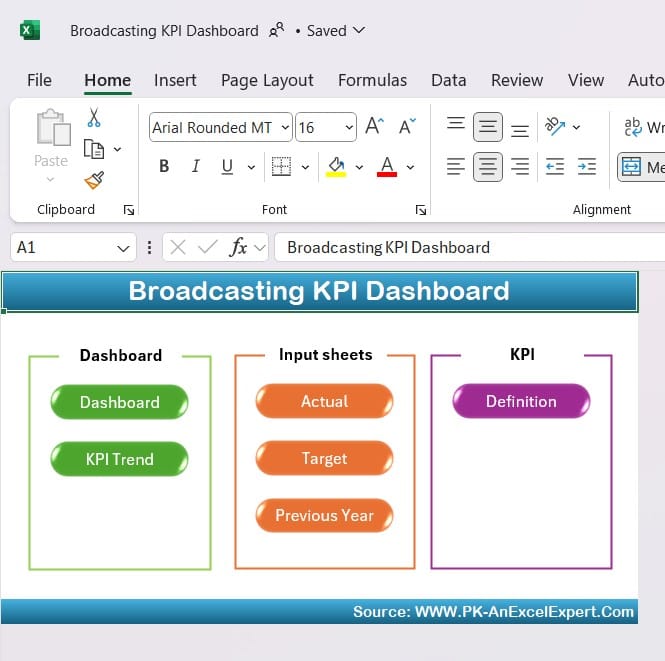
Click to buy Broadcasting KPI Dashboard in Excel
The Home sheet serves as the index page, providing easy navigation throughout the dashboard. It includes six buttons that allow you to jump directly to each of the following tabs, enhancing user experience and efficiency.
Dashboard Sheet
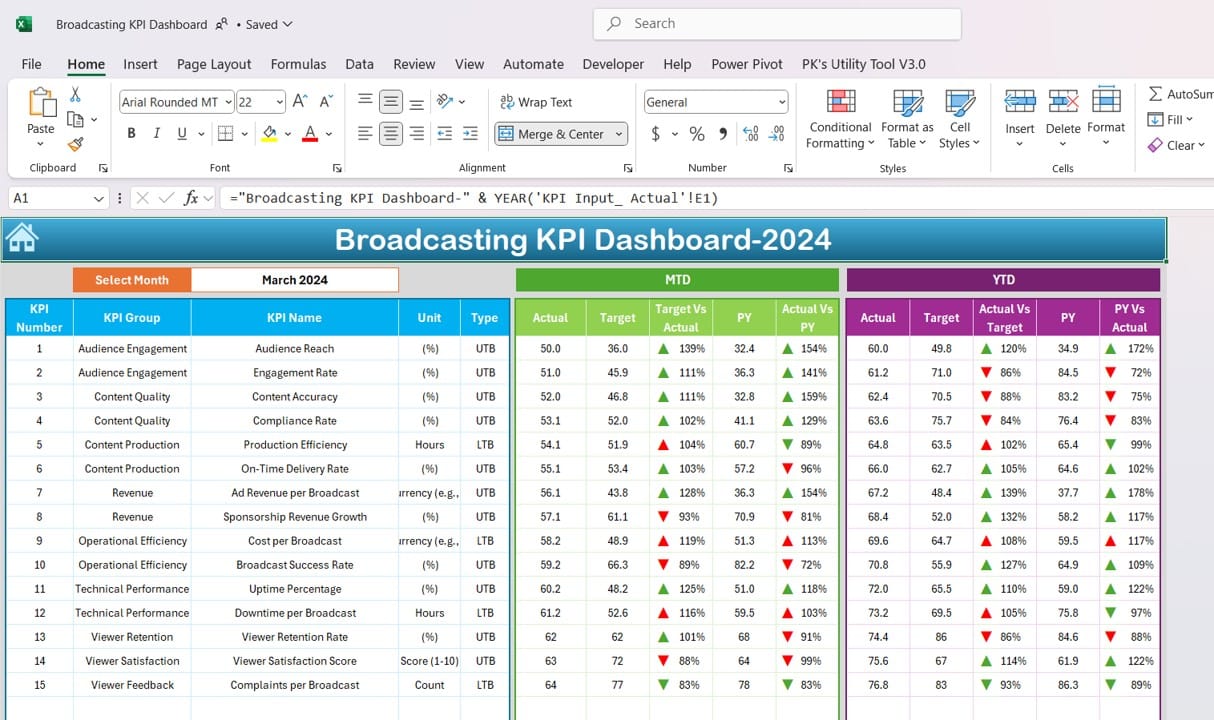
This tab is the heart of the Broadcasting KPI Dashboard, displaying an overview of all KPIs. On this sheet, you can:
- Select the Month: Use the drop-down menu in cell D3 to choose a specific month, instantly updating the dashboard data.
- View Monthly Targets vs. Actual Performance: The dashboard shows both Month-to-Date (MTD) and Year-to-Date (YTD) metrics for the chosen month.
- Analyze Trends with Conditional Formatting: Visual cues, such as up and down arrows, indicate whether each KPI is meeting targets or needs improvement. Conditional formatting is applied to compare both Target vs. Actual and Previous Year (PY) vs. Actual data.
Click to buy Broadcasting KPI Dashboard in Excel
KPI Trend Sheet
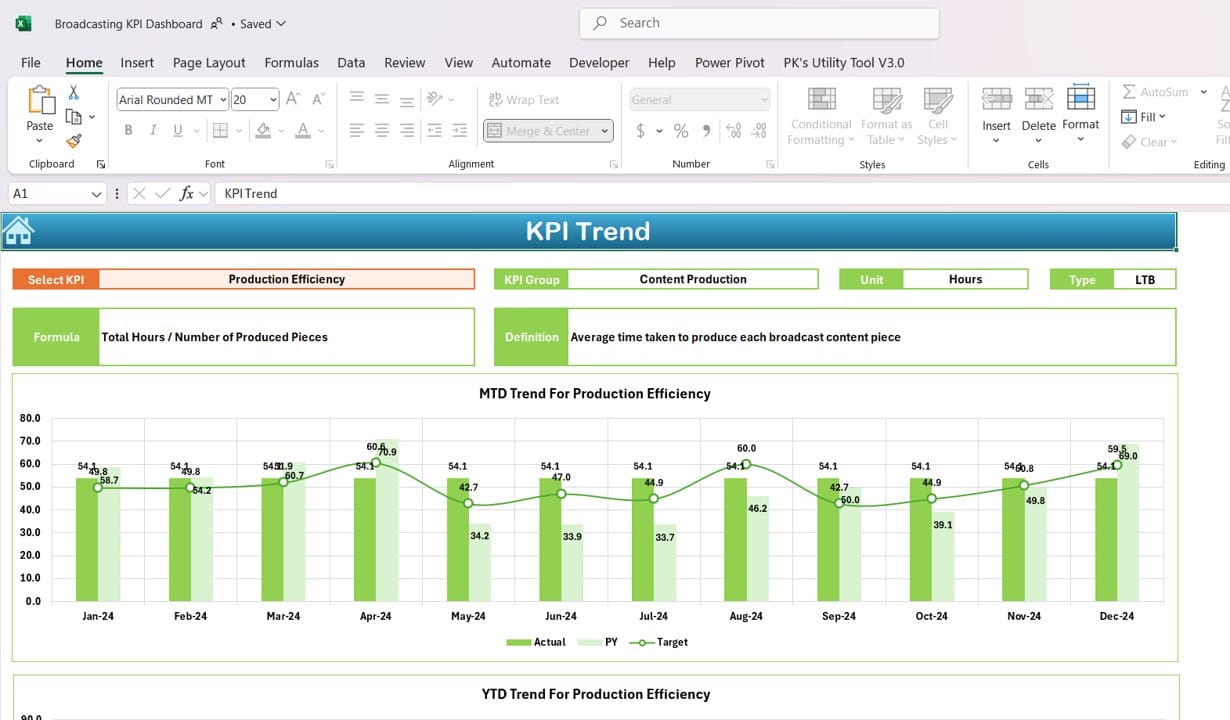
This sheet provides an in-depth look at individual KPI trends. Here’s what’s included:
- KPI Selection: Select a KPI name from the drop-down in cell C3.
- Detailed KPI Information: View the KPI Group, Unit, Type (e.g., Lower is Better or Upper is Better), Formula, and Definition for each KPI.
- Trend Charts: Trend charts show MTD and YTD performance for Actual, Target, and PY values, offering a visual snapshot of KPI progression.
Actual Numbers Input Sheet
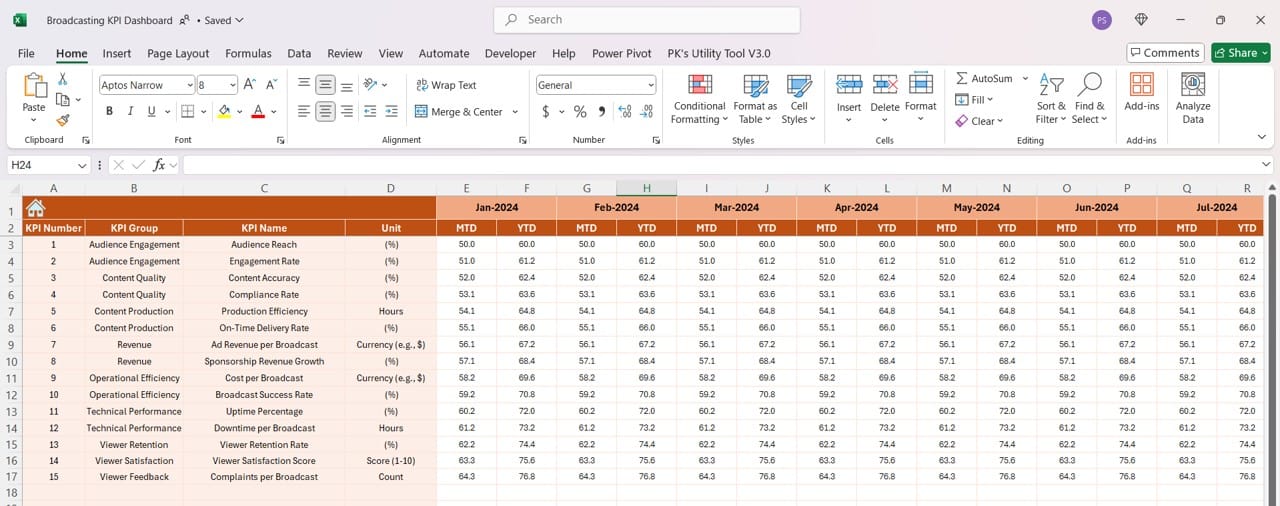
Click to buy Broadcasting KPI Dashboard in Excel
In the Actual Numbers Input sheet, you’ll enter monthly actual performance data:
- YTD and MTD Data Entry: Record the actual figures for each KPI for the chosen month.
- Easy Month Selection: Set the first month of the year in cell E1 to automatically configure the data input for the remaining months.
Target Sheet
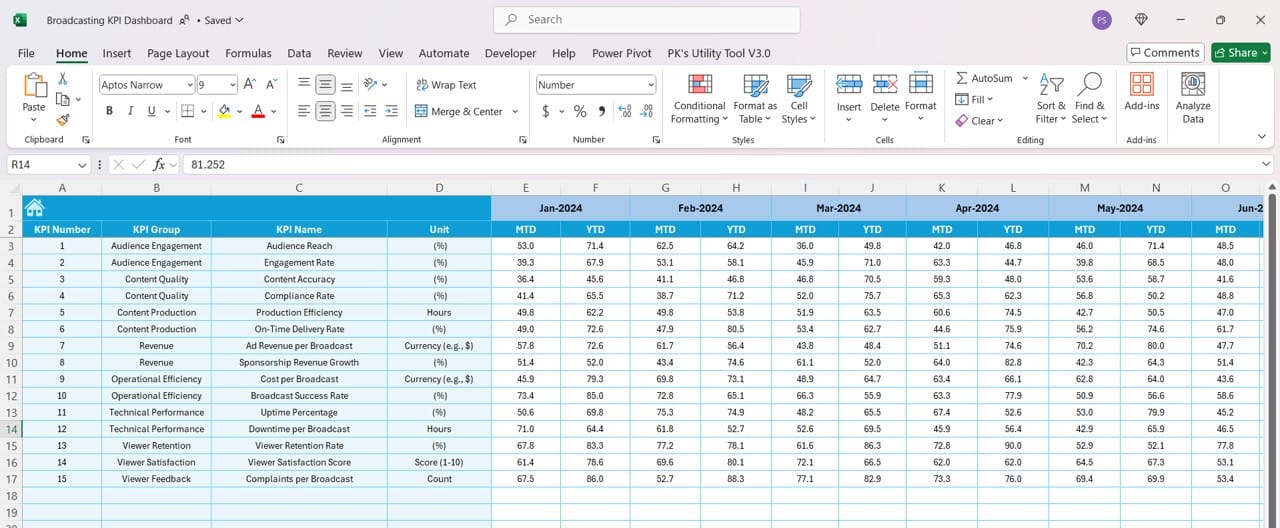
This tab allows for entering target figures on both MTD and YTD bases:
- Monthly and Yearly Goals: Input target values for each KPI, providing clear benchmarks for performance analysis.
Previous Year Numbers Sheet
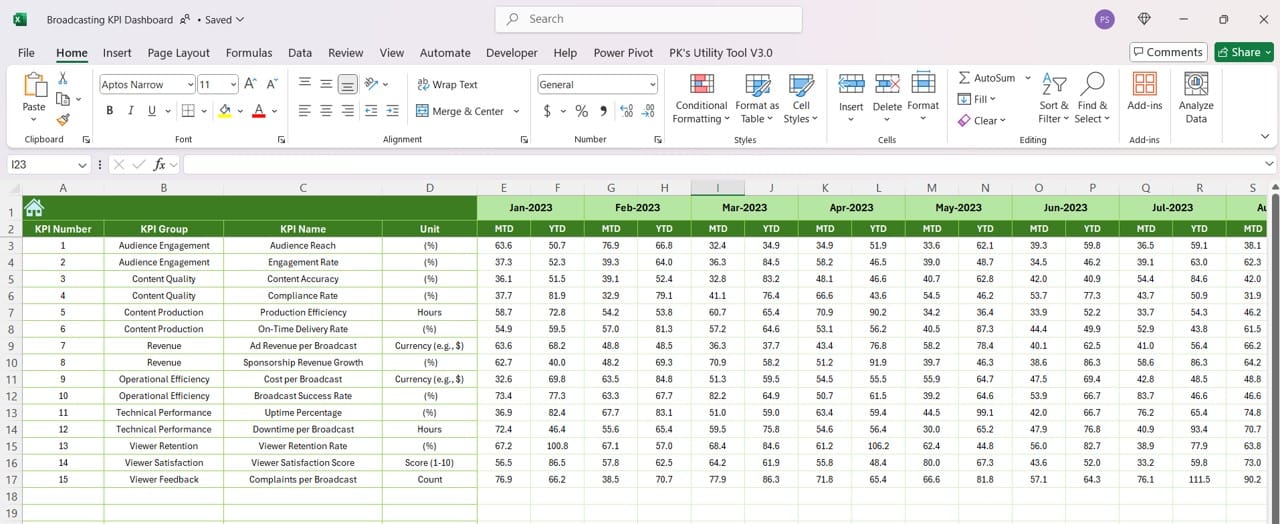
This sheet is designed to hold the previous year’s data:
- Historical Comparison: Input previous year figures to facilitate year-over-year (YoY) analysis.
Click to buy Broadcasting KPI Dashboard in Excel
KPI Definition Sheet
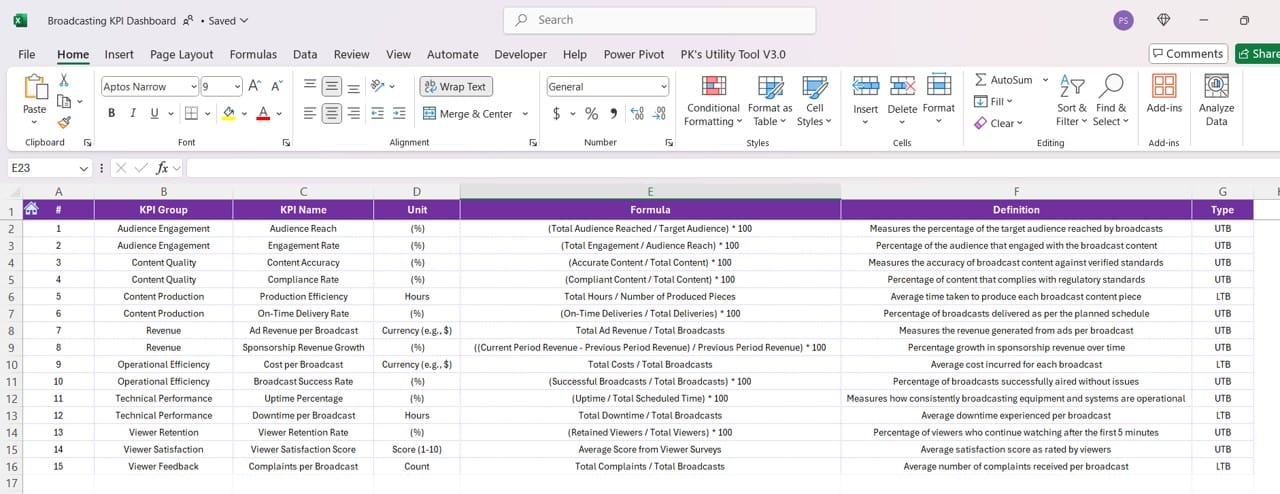
In this section, you’ll define each KPI:
- KPI Details: Enter details such as KPI Name, Group, Unit, and Formula.
- Clear Definitions: Add a definition for each KPI to ensure consistent understanding across your team.
Advantages of Using a Broadcasting KPI Dashboard in Excel
- Efficient Data Consolidation: The Broadcasting KPI Dashboard consolidates essential KPI data across multiple sheets, providing an organized and comprehensive view of performance metrics.
- Real-Time Tracking: The interactive features allow real-time performance tracking with just a few clicks, updating monthly and yearly KPI progress instantly.
- Customizable for Any Broadcasting Team: The Excel dashboard is fully customizable, allowing users to tailor KPI groups, targets, and definitions to fit specific organizational needs.
Best Practices for Using the Broadcasting KPI Dashboard
- Define KPIs Clearly: Ensure that each KPI has a clear, actionable definition. This can be achieved through the KPI Definition sheet, which serves as a reference for users.
- Regularly Update Data: Accurate data entry is key. Regularly update the Actual, Target, and Previous Year numbers to reflect the most current performance figures.
- Use Conditional Formatting Wisely: Conditional formatting with visual indicators (like up and down arrows) makes it easy to see performance at a glance. Use these indicators to highlight KPIs that require immediate attention.
- Leverage Trend Charts: Make use of the trend charts in the KPI Trend sheet to spot patterns and identify areas where performance is steadily improving or declining.
Click to buy Broadcasting KPI Dashboard in Excel
Opportunities for Improvement in the Broadcasting KPI Dashboard
- Automate Data Entry: Consider using VBA (Visual Basic for Applications) macros in Excel to automate data entry for the Actual and Target sheets. Automation can reduce human error and save time.
- Integrate with Real-Time Data Sources: Integrating the dashboard with live data feeds, like databases or third-party software, can enhance accuracy and timeliness. This would require a more advanced setup but could significantly streamline operations.
- Enhance Visualization Options: Excel offers many chart options that go beyond basic trend charts. Experiment with sparklines, heat maps, or interactive slicers to make data visualization even more engaging and insightful.
Frequently Asked Questions
Q1: Can I customize the KPIs in this dashboard?
A1: Yes, the Broadcasting KPI Dashboard is fully customizable. You can modify KPI names, units, and targets to suit your organization’s specific requirements.
Q2: How do I update the monthly data?
A2: Monthly data can be updated in the Actual Numbers Input and Target sheets. Select the first month in cell E1 to align all month-based data entries accordingly.
Q3: What if I need to track additional KPIs?
A3: Adding more KPIs is straightforward. You can extend the KPI Definition sheet and ensure new KPIs are linked within the Actual, Target, and Previous Year sheets for smooth data flow.
Q4: Is there a way to automate this dashboard?
A4: Yes, you can implement Excel macros (VBA) to automate data entries and even integrate live data feeds for real-time tracking, although these features would require a more advanced Excel setup.
Q5: How often should I update the data in this dashboard?
A5: For the best results, update data on a monthly basis or as new figures become available. Consistent updates ensure the dashboard reflects accurate, actionable insights.
Q6: Can I share this dashboard with my team?
A6: Absolutely. Since the dashboard is built in Excel, it’s easy to share with others. Make sure each team member understands how to use the dashboard and update relevant sheets as necessary.
Click to buy Broadcasting KPI Dashboard in Excel
Visit our YouTube channel to learn step-by-step video tutorials
View this post on Instagram
Click to buy Broadcasting KPI Dashboard in Excel

